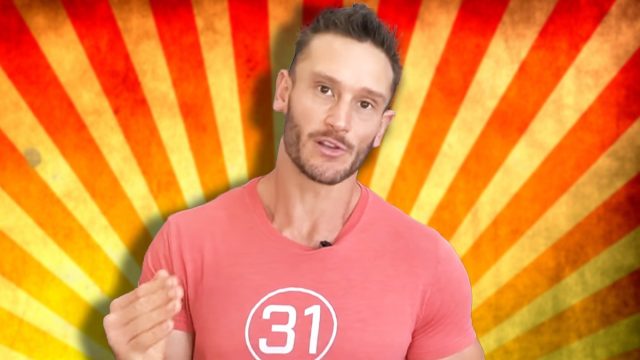Over 50? Here's How Much Protein You Need to Rebuild Lost Muscle

After 50, your body loses 1-2% of muscle mass yearly – a condition that slows metabolism and decreases strength. Thomas DeLauer, nutrition coach to professional athletes with 3.68 million YouTube subscribers, reveals the specific protein amount that can rebuild this lost muscle. His research cuts through conflicting advice to provide a precise formula that works specifically for older adults. Learn exactly how much protein you need and when to consume it to maintain strength and mobility for years to come.
Your Body Loses Muscle Faster Than You Realize
Your body undergoes significant changes as you age, particularly when it comes to muscle maintenance. "After 40, you lose about 1-2% of your muscle mass per year," DeLauer explains in his post. This condition, called sarcopenia, creates an imbalance between muscle growth signals and breakdown signals in your body. As DeLauer points out, the forces that signal muscle breakdown increase while your body's ability to build muscle diminishes, creating a challenging situation that requires deliberate nutritional strategies to overcome.
Why Your Muscles Stop Responding to Protein
Your body's muscle-building capacity changes with age due to several biological factors. DeLauer explains that there's a reduction in satellite cells, which are essential for muscle repair after exercise. "Satellite cells hover above existing muscle cells, and when we break down a muscle, these cells fuse to it and allow rebuilding," says DeLauer. Additionally, your muscles experience increased protein degradation rates and slower ATP generation, making it harder to maintain strength and muscle mass without intervention.
The Hidden Absorption Problem After 50
Age affects how efficiently your body processes protein from your meals. According to DeLauer, research published in PLOS One revealed fascinating differences between young and older adults. "Once protein was actually absorbed, muscle protein synthesis was the same between older people and younger people," says DeLauer. However, older adults showed a 16% lower muscle protein synthesis rate after eating, indicating that while your muscles can still build effectively, getting the protein there becomes more challenging as you age.
The Magic Number: 1.6 Grams Per Kilogram
The research points to a specific protein requirement for rebuilding muscle after 50. "You want to be consuming about 1.6 grams of protein per kilogram of body weight over the course of the day," DeLauer advises. This translates to approximately 0.8-1 gram of protein per pound of body weight daily. For a 200-pound person, that means aiming for about 200 grams of protein spread throughout the day, which is substantially higher than what many adults over 50 typically consume.
Why Meal Timing Changes Everything
Spreading your protein intake evenly throughout the day yields better results than consuming the same amount unevenly. "Newer research suggests that if you're over 50, consuming 40 grams of protein with each meal yielded much better protein synthesis results than eating it unevenly," says DeLauer. This consistent approach helps maintain metabolic flexibility and keeps your muscles consistently supplied with the building blocks they need for maintenance and growth.
The Exercise Secret That Maximizes Protein Uptake
Exercise dramatically improves your body's ability to use protein effectively. DeLauer emphasizes that "once protein is in the system and actually doing its job, muscle protein synthesis is pretty much the same when you're older than it was when you're younger." Resistance training, even at light intensity, enhances insulin sensitivity for protein to enter your muscles. This combination of proper protein intake and consistent exercise explains why some individuals in their 60s and 70s maintain impressive muscle mass.
How Your Protein Needs Increase By Decade
Your protein requirements should increase progressively as you age. "Each decade that you get older from 40, 50, 60, you should probably be increasing the amount of protein you consume by another quarter to half a gram of protein per pound of body weight," DeLauer recommends. This progressive increase helps counteract the natural decline in protein absorption and utilization that comes with aging, ensuring your muscles receive adequate nutrition despite physiological changes.
Why Higher Protein Won't Harm Your Health
Many people worry about potential health consequences of increased protein intake. DeLauer addresses this concern directly: "You might be wondering, is this hard on my kidneys? Is this hard on the body? Not really if you're hydrated and you're getting enough fiber." He emphasizes that muscle breakdown is far more detrimental to overall health than a properly implemented higher-protein diet. Prioritizing sufficient protein intake allows you to maintain muscle mass and continue living an active, healthy life regardless of age. And if you enjoyed this article, take advantage of these 15 Quick Ways to Lose Body Fat Percentage in a Week.




